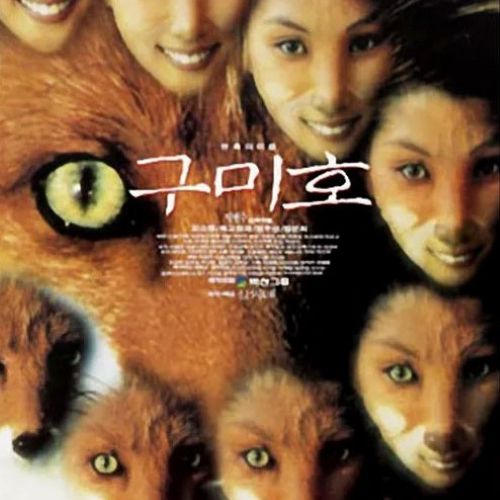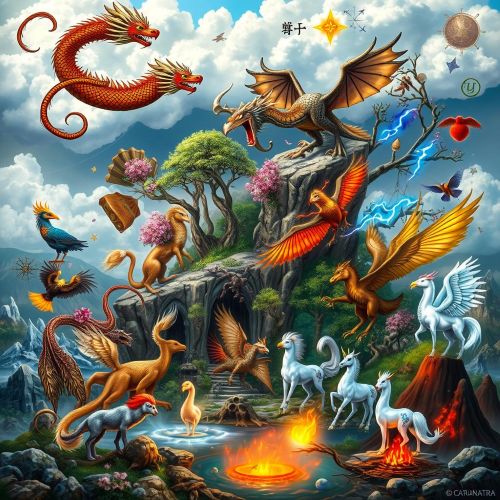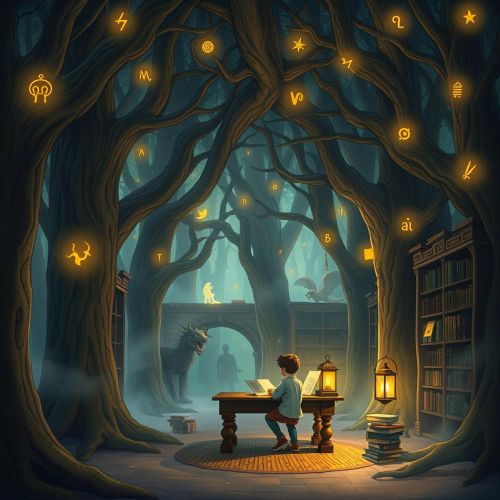Comparing Myths Across Different Cultures: An Educational Approach
Powerful stories steadily shape shared thinking across every land and historical era. Fireside tales, temple chants, and printed archives carry mythic wisdom to new ears. Educators who search for instant plans may open WritePaperForMe and download neat outlines. Yet even the finest outline gains power when the teacher grasps the engine inside the narrative. By placing myths from distant regions side by side, the lesson shifts from casual reading to active discovery. Learners trace mirrored ideas, spot bright contrasts, and honor each source with careful attention.
This guide outlines precise steps for building and sustaining that deeper discovery process. It moves through creation accounts, perilous quests, restless tricksters, and playful nature tales. Each section supplies plain advice for respectful study and energetic group talk. The journey ends with projects that reveal growth in reasoning and empathy. Continuous revision of the unit plan preserves freshness every single year. Cross-disciplinary ties invite language, art, and history classes into the exploration as equal partners.
Understanding Myths: Basic Definitions
A myth stands as a community narrative that explains life, marks values, and guards memory. The tale presents itself as true inside its culture, unlike a light fairy story told only for amusement. That inner claim grants authority and helps bind the listeners together during shared retellings. Scholars call the field examining such tales mythology, a broad inquiry into how stories mold belief.
Teachers must clearly stress that myths are not cheap falsehoods or empty stories. Such narratives rely on vivid symbols and layered metaphors to store community wisdom safely. Modern readers may doubt flying horses, yet themes like courage, envy, and mercy still resonate widely. Presenting modern media examples, like superhero films or popular games, reveals how ancient patterns endure in new forms. Identifying clear thematic parallels noticeably builds stronger long-term retention among learners.
Common Themes Shared by Ancient Myths
Researchers scanning many distant traditions repeatedly notice identical images appearing in different contexts. Vast floods drown fields, cosmic eggs break open, and sacred fires renew entire worlds. These echoes suggest shared fears of chaos and shared hopes for renewal among humans everywhere.
Teachers can actively guide students in mapping each recurring motif with accuracy. The grid lists floods from Mesopotamia, China, West Africa, and the Americas, along with survivor traits and divine roles. Systematic tracking sharpens observation skills and nurtures mindful reading across sources. Peer feedback expands insight and strengthens respectful dialogue after data collection. Teachers may assign reflective journals in which students trace one chosen motif across four traditions. Entries should note moral considerations and local environmental factors that affected every retelling.
Creation Stories From Around the World
Origin myths answer the deepest curiosity surrounding the birth of everything seen and unseen. Greek poets described silent chaos cracking apart into sky and earth. Yoruba priests recited how a sky ruler handed soil to a shaping spirit who built solid land upon endless water. Haida elders said that Raven pried open a giant clamshell and released the first people onto shining shorelines.
Teachers highlight recurring images like darkness yielding to light, water yielding to earth, and sound calling life forward. Students craft clay figures, paint swirling chaos, or weave water signs to transform abstract ideas into tactile memory. The display remains visible the term and serves as a living reference during later discussions. A gallery walk displaying images or sculptures inspired by each creation myth can turn abstract concepts into tactile learning. The exhibit remains in class as a living reference during later units.
Hero Journeys and Moral Lessons
The hero cycle still stands as the most recognizable global myth pattern. Adventurers leave safety, confront trials, win aid, seize insight, and return bearing gifts for their people. Hercules lifts mountains, King Arthur unites knights, Sun Wukong races through courts above, and Māui lassoes the sun.
Groups place each stage onto Campbell’s circular chart and add cultural variations for comparison. They then record podcasts summarizing findings, blend regional music, and share files through the class portal. The multimedia practice develops practical technical literacy while also deepening collective myth insight. Recorded audience comments create immediate and valuable peer assessment for presenters.
Nature and Animal Tales
Etiological myths explain animal features and natural forces through vivid imagery and concise narration. Coyote flings glowing pine seeds high, forming bright constellations across silent night skies. A slow Zulu chameleon loses a life-changing race and ties humans to mortal spans.
After hearing each myth, students observe living animals, examine fossils, or explore weather exhibits during short field trips. Such imaginative accounts open smooth, engaging paths directly into integrated science lessons. Guided field trips to local parks or nearby museums add vivid experiential context for learners. Observing live animals or natural exhibits lets students compare mythic explanations with biological facts in real time. That direct study turns abstract analysis into a vivid experience remembered long after class finishes. Detailed sketch journals capture observations carefully and pair expressive art with systematic science.
Tricksters, Gods, and Mischief
Loki, Anansi, and Kitsune twist rules with charm and fearless wit. Anansi bargains for ownership of stories, revealing endurance among oppressed voices seeking agency. Loki’s elaborate schemes display hazards that arise when brilliant minds ignore moral anchors.
Students can create comic strips that highlight a classic trick within a modern setting. Examples include Loki working inside a startup or Anansi playfully hacking social media networks. They carefully weigh fun against harm and decide on balanced, fair outcomes. Inventive story humor steadily strengthens student engagement and collective enjoyment during workshops.
Case Study: Japanese Legends and Myths
The Japanese archipelago offers a vivid mythic landscape well suited for focused classroom study. Izanagi and Izanami spin a jeweled spear into churning brine and raise dripping land from deep water. Amaterasu hides in a cave after being insulted, plunging the earth into shadow until fellow gods coax her return.
Momotarō emerges from a peach, recruits loyal animal allies, and defeats ogres through teamwork, clever planning, and respect. Tanuki spirits shift shape and deliver gentle satire about greed, waste, or careless pride. A guest speaker familiar with Shinto festivals or a virtual shrine tour places these myths within living culture today. Detailed reflection sheets help participants capture fresh insights gathered during the cultural visit.
Classroom Activities for Comparing Myths
Groups draw wide circles on poster paper, place two myths inside, and mark shared images in the overlap. A yarn web on a wall map connects stories to homelands and reveals the movement of ideas across geography. Energetic role play naturally invites empathy and deep comprehension among participants. Students craft simple costumes from paper and cloth for dramatic reenactments. They may act the Maori emergence of Aotearoa or chant lines from the Mesopotamian Enuma Elish. A myth mash-up writing task merges two heroes into one plot and exposes contrast alongside harmony. Interactive quiz games match symbols to stories and keep reviews energetic, while visible leaderboards encourage healthy, sustained interest across the entire academic term.
Bringing It All Together
Comparative myth study cultivates curiosity, respect, and sharp reasoning rather than serving as a schedule filler. Digital timelines align myth events with historical migrations, trade shifts, and empire changes to illustrate context.
Reflective essays describe how exploring diverse tales shaped new views on shared humanity. Creative anthologies reset ancient plots inside present neighborhoods and prove timeless structures can house fresh meaning. Assessments focus on clear comparison evidence rather than memorized dates and isolated facts. Families join showcase nights, view student work, and spark dialogue across generations about cultural heritage. Public celebrations proudly highlight measurable student growth and reinforce community support. A closing circle discussion reinforces key takeaways and honors collective achievement as the unit concludes.
No posts were found.









